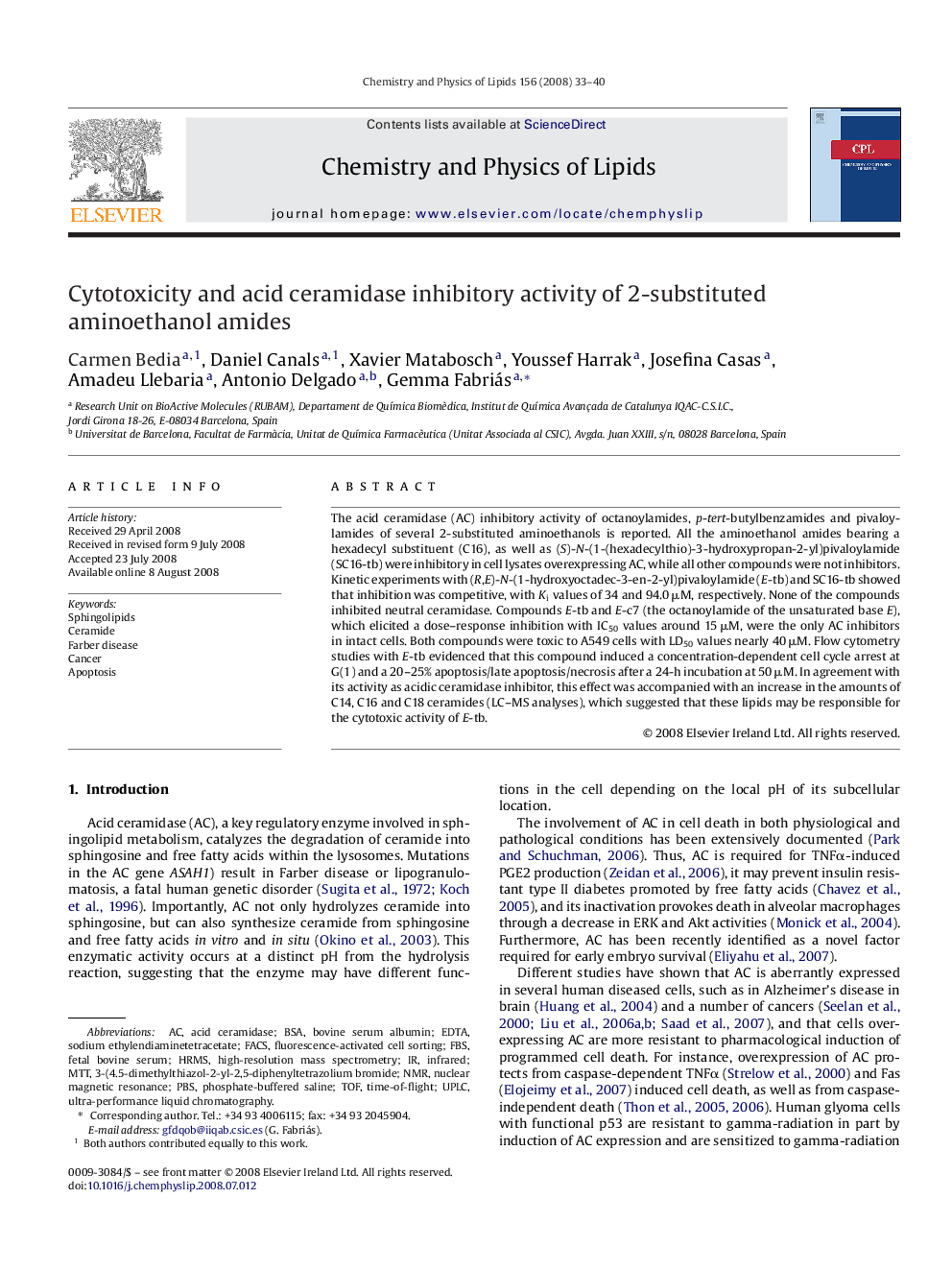| Article ID | Journal | Published Year | Pages | File Type |
|---|---|---|---|---|
| 1253717 | Chemistry and Physics of Lipids | 2008 | 8 Pages |
The acid ceramidase (AC) inhibitory activity of octanoylamides, p-tert-butylbenzamides and pivaloylamides of several 2-substituted aminoethanols is reported. All the aminoethanol amides bearing a hexadecyl substituent (C16), as well as (S)-N-(1-(hexadecylthio)-3-hydroxypropan-2-yl)pivaloylamide (SC16-tb) were inhibitory in cell lysates overexpressing AC, while all other compounds were not inhibitors. Kinetic experiments with (R,E)-N-(1-hydroxyoctadec-3-en-2-yl)pivaloylamide (E-tb) and SC16-tb showed that inhibition was competitive, with Ki values of 34 and 94.0 μM, respectively. None of the compounds inhibited neutral ceramidase. Compounds E-tb and E-c7 (the octanoylamide of the unsaturated base E), which elicited a dose–response inhibition with IC50 values around 15 μM, were the only AC inhibitors in intact cells. Both compounds were toxic to A549 cells with LD50 values nearly 40 μM. Flow cytometry studies with E-tb evidenced that this compound induced a concentration-dependent cell cycle arrest at G(1) and a 20–25% apoptosis/late apoptosis/necrosis after a 24-h incubation at 50 μM. In agreement with its activity as acidic ceramidase inhibitor, this effect was accompanied with an increase in the amounts of C14, C16 and C18 ceramides (LC–MS analyses), which suggested that these lipids may be responsible for the cytotoxic activity of E-tb.
